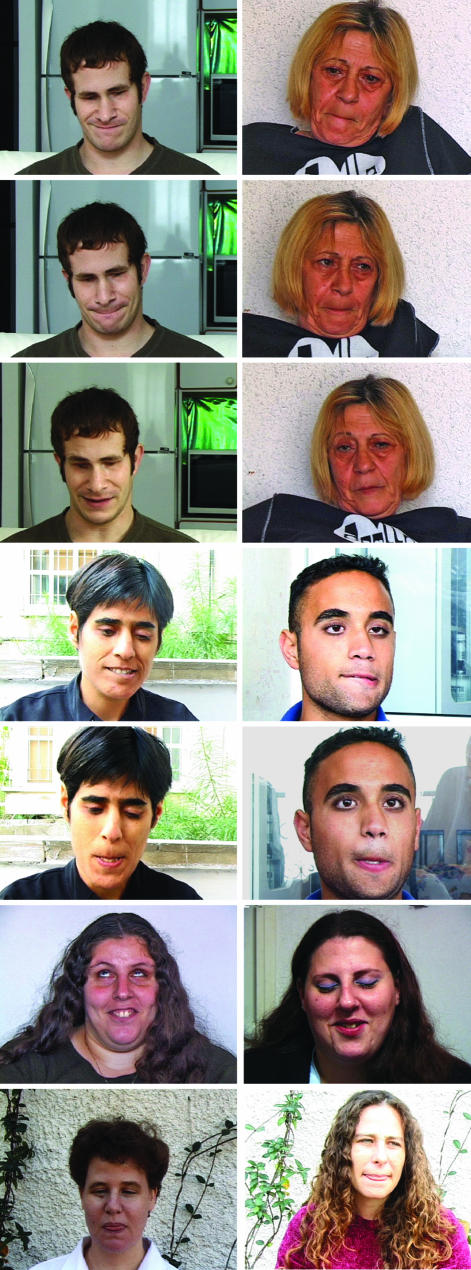Fig. 4.
Similar movements in born-blind participants (Left) and their sighted relatives (Right). Movement 30 (see Table 2) in rows 1 and 2 shows typical movements of the lips while the lips touch each other (as if chewing). Movement 14 (see Table 2) in row 3 shows raising the right eyebrow only. Movement 22 (see Table 2) in row 4 shows biting the lower lip while the mouth shows left asymmetry. Movement 25 (see Table 2) in row 5 shows rolling the upper lip inside. For movement 41 (see Table 2) in row 6 a “U” shape is created in the area between the lower lip and the chin. The chin is stretched and goes forward. The edges of the mouth are embedded and the lower lip is stretched. In movement 1 (see Table 2) in row 7 the tongue protrudes and touches both lips.

